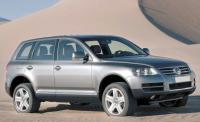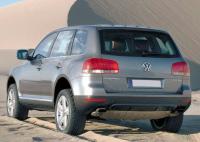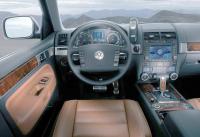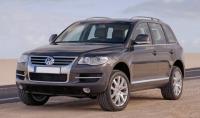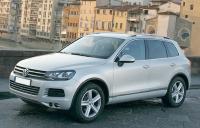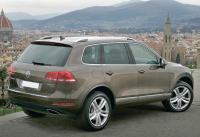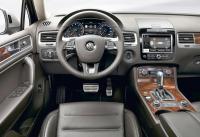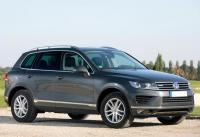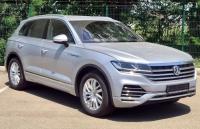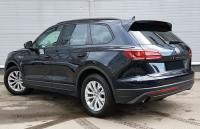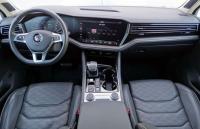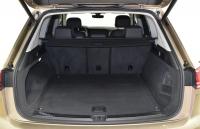The name of the car was chosen in honor of the nomadic Tuareg people living in the Sahara desert and regions of North Africa. More than 850 thousand cars of the first two generations were produced.
Tuareg I (2002—2010)
On September 26, 2002, the first Volkswagen SUV was presented at the Paris Motor Show. The interior of the car is finished very high quality using both modern and traditionally expensive materials such as wood and aluminum. Functionality and convenience are provided by all modern achievements in the automotive industry: seats with 6 settings, microclimate system, individual lighting sources, many drawers and holders. Vehicle safety is also not in last place: ESP, RDK, ABS, EBC, HBA systems, 6 airbags, pretensioned belts and others.
Quite powerful V-shaped engines with six or eight cylinders on gasoline or diesel fuel are installed on the Tuareg. There is a limited edition with V-shaped ten-cylinder turbodiesels. Transmission 6-speed manual and automatic with differential locks and downshift. You can also optionally install an air suspension, which made it possible to increase the ground clearance up to 30 cm to improve off-road qualities.
In 2007, the car was restyled. Basically, they changed the exterior design, slightly redesigned the interior, and also added a lot of modern electronic systems: ABS-plus, adaptive cruise control, a dead zone scanner, a rollover sensor, and a more reliable automatic transmission.
Tuareg II (2010—2018)
The second generation was presented in Munich in early 2010. The body has become a little larger: length +43 mm, width +12 mm, but the height has decreased by 20 mm. But the most important changes are the addition of new modern electronic systems.
An interesting innovation is the adaptive lighting system, which reduces the illumination of oncoming vehicles, but without compromising road illumination. To the already existing systems of the first generation, an upgraded adaptive cruise control with distance control, a collision avoidance system, a lane departure warning system, an active suspension, a full perimeter view using video cameras, a GPS navigator and others were added.
The engine range includes petrol engines ranging from 3.0 to 4.2 liters with a capacity of 280 to 360 hp. and turbocharged diesel engines with a volume of 3.0 to 4.2 liters with a capacity of 204 to 340 hp. There is only one transmission left - an 8-speed Aisin automatic transmission. Volkswagen also released the first hybrid car with a 3.0-liter gasoline engine (333 hp) in tandem with a 47 hp electric motor. with.
Tuareg III (2018— present _ in.)
The third generation Volkswagen Touareg was introduced in March 2018. This car is based on the platform «Volkswagen Group MLB», which has previously been used for Audi Q7 and Porsche Cayenne. The drag coefficient has been reduced from 0.35 for the second generation to 0.32. The car became a little larger and its dimensions began to be - length 4878 mm, width 1984 mm, height 1717 mm, wheelbase 2904 mm. The curb weight decreased slightly due to the more active use of aluminum and amounted to 2020-2070 kg. Boot space with the rear seats folded down has grown by more than 100 liters to 810 litres. With optional air suspension, the maximum ground clearance is 258 mm. The car can overcome slopes up to 60°and overcome fords 490-570 mm deep.

In 2018, the car was tested for safety by the European committee Euro NCAP, resulting in an overall rating of 5 stars out of 5. See table for details.

